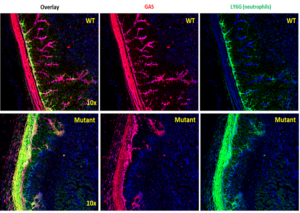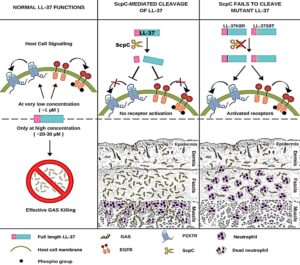Academics
| Degree | University/Institution |
|---|---|
| Ph.D. (Biology) | CSIR-Indian Institute of Chemical Biology, (Jadavpur University), Kolkata, India |
| M.Sc. (Zoology) | Calcutta University, India |
Work Experience
| Position | University/Organisation | Period |
|---|---|---|
| Scientist C | ILS, Bhubaneswar | From July, 2022 |
| Assistant Project Scientist | University of California, David Geffen School of Medicine, Los Angeles, USA | May 2022 - June 2022 |
| Associate Staff Scientist | Oklahoma Medical Research Foundation (OMRF), Cardiovascular Biology Research Program, USA | November 2021 - April 2022 |
| Senior Research Fellow | National University of Singapore, Department of Microbiology and Immunology, Singapore | July 2014 - October 2021 |
| Postdoctoral Research Fellow | Hebrew University of Jerusalem, Department of Microbiology and Molecular Genetics, Israel | March 2011 - June 2014 |
Awards & Recognition
| Details |
|---|
|
Research
| Details |
|---|
Host-Bacteria Interactions and Skin Immunology Research Summary – This lab is interested in understanding the various interactions occurring between the virulence factors produced by bacterial pathogens, and the different arms of the host immune system, with special focus on skin immunity. The lab focus is to understand these interactions, in terms of the underlying host immune signalling and molecular mechanisms, with the ultimate aim of designing better and more efficient host-directed preventives and therapeutics. The lab is also involved in screening potential anti-bacterials and immunomodulators from natural sources and synthetic compound libraries to target the rising threat of antimicrobial resistance. Bacterial infections also work as trigger for various skin autoimmune diseases like psoriasis and the lab is intent on elucidating the causative molecular mechanisms to pave way for improved and economically-relevant therapeutics for the Indian patient community. |
Publications
| Details |
|---|
1. Anand A, Sharma A, Ravins M, Biswas D, Ambalavanan P, Lim XZK, Min RTY, Johri AK, Tirosh B, Hanski E. Unfolded protein response inhibitors cure group A streptococcal necrotizing fasciitis by modulating host asparagine. Science Translational Med. 2021, 13(605), eabd7465. [ISSN 1946-6234 (print), 1946-6242 (web); IF 19.343] Book Chapters: |
Group
| Details |
|---|
Ph.D Students Devashish Barik
Lab Technician Sanjeeb Kumar Dhir |
Grants
Contacts
| Address | Fax | Office | |
|---|---|---|---|
| debabrata@ils.res.in | Nalco Square, Bhubaneswar-751023, India | 0091 674 2300728 | 0091 674 2304352 |
Highlights
| Details |
|---|
Bacterial enzyme, ScpC, as a MAJOR Virulence Factor (Biswas, et al., 2021) Immunofluorescence study at 48 hours post-infection, showed the importance of ScpC as a virulent factor. In wild-type streptococcus bacterial infection, the neutrophils are unable to approach the vast population of bacteria present in the tissue. However, when infected with a ScpC-deleted mutant bacteria, we can observe distinct co-localization of huge amount of recruited neutrophils with the bacteria in the fascia.  Immunofluorescence image of mouse skin tissues.
Immunomodulation by LL-37 contributes to protection against infection (Biswas et al., 2021) The novel finding to the field of streptococcal disease biology, is highlighting the immune signalling property of a known antimicrobial peptide, LL-37 to be the major contributing factor towards host protection rather than its canonical bactericidal activity.
|
Positions
| Details |
|---|
The lab is interested in recruiting self-motivated students, particularly interested in infection and immunity: Students interested for dissertation and internship, please refer to https://www.ils.res.in/ils-training-programme/ Aspiring Ph.D students, refer to the ILS website for Ph.D Program advertisements. |


